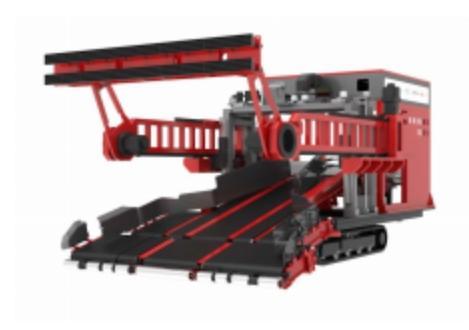
[Courtesy of the Ministry of Land, Infrastructure and Transport ]
The domestic logistics industry was overburdened with massive waves of parcels in 2020 and 2021 when consumers bought groceries, everyday necessities and other products through online shopping malls. According to data released by the Korea Integrated Logistics Association, some 3.3 billion parcel packages were sorted and distributed in 2020. A novel coronavirus. has caused the intermittent closure of major logistics centers.
When a cargo truck full of parcel packages arrives at a loading bay of a logistics center, workers move in and out of the truck to unload parcels onto a sorting conveyor belt before being sorted and loaded onto smaller trucks for delivery to consumers. It takes hours for a team of two or three to load and unload parcels. An annual average of 16 logistics center workers die from overworking.
The Ministry of Land, Infrastructure and Transport has selected a parcel loader robot to be included in a logistics technology incubation project, which was launched in 2020 to quickly incubate and distribute technologies and help increase work efficiency and reduce safety accidents in the logistics sector.
The robot, jointly developed by the Korea Railroad Research Institute and Nova, a logistics technology developer, can load and unload parcels about four times faster than a team of human workers. The robot is capable of moving uneven-shaped parcels as well as box-shaped packages using artificial intelligence-based image recognition algorithms.
"The parcel loader robot is a very effective tool that can also help reduce safety accidents at logistics centers. We hope the robot gets widely adopted at centers to improve the human work environment," Park Sang-hee, a researcher at the state-run Korea Agency for Infrastructure Technology Advancement, told Aju Business Daily. The transport ministry will provide subsidies for robot developers and encourage public organizations to adopt the novel technology.
Copyright ⓒ Aju Press All rights reserved.




